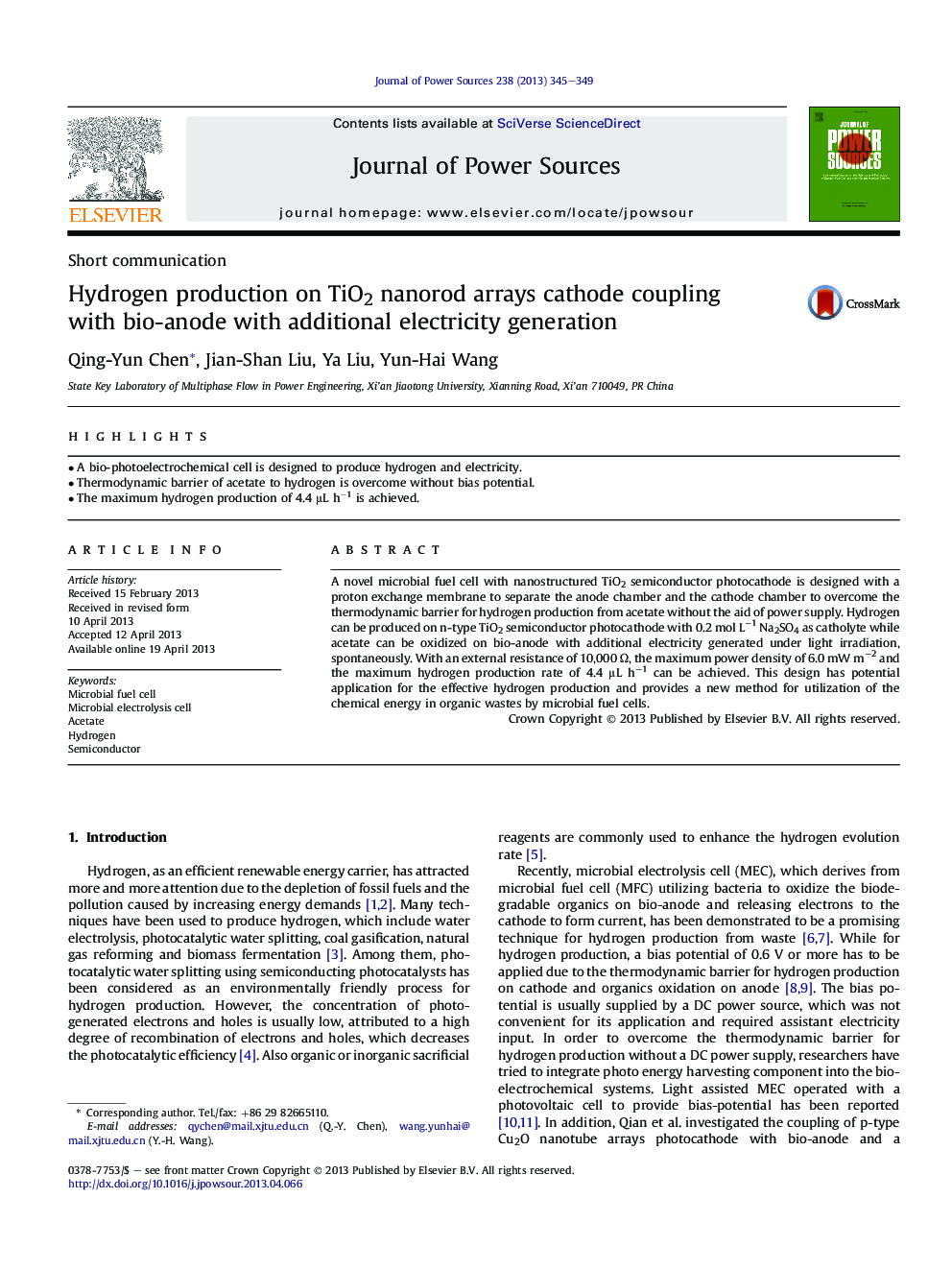| Article ID | Journal | Published Year | Pages | File Type |
|---|---|---|---|---|
| 1284354 | Journal of Power Sources | 2013 | 5 Pages |
•A bio-photoelectrochemical cell is designed to produce hydrogen and electricity.•Thermodynamic barrier of acetate to hydrogen is overcome without bias potential.•The maximum hydrogen production of 4.4 μL h−1 is achieved.
A novel microbial fuel cell with nanostructured TiO2 semiconductor photocathode is designed with a proton exchange membrane to separate the anode chamber and the cathode chamber to overcome the thermodynamic barrier for hydrogen production from acetate without the aid of power supply. Hydrogen can be produced on n-type TiO2 semiconductor photocathode with 0.2 mol L−1 Na2SO4 as catholyte while acetate can be oxidized on bio-anode with additional electricity generated under light irradiation, spontaneously. With an external resistance of 10,000 Ω, the maximum power density of 6.0 mW m−2 and the maximum hydrogen production rate of 4.4 μL h−1 can be achieved. This design has potential application for the effective hydrogen production and provides a new method for utilization of the chemical energy in organic wastes by microbial fuel cells.
